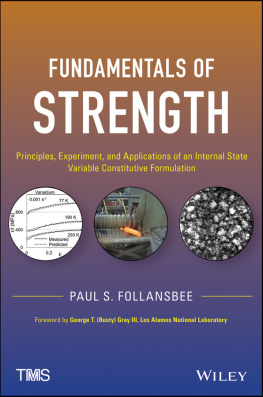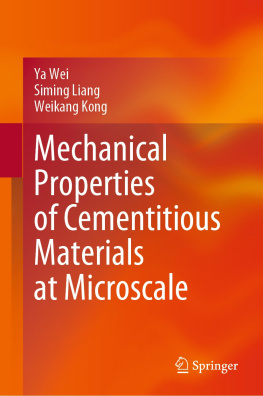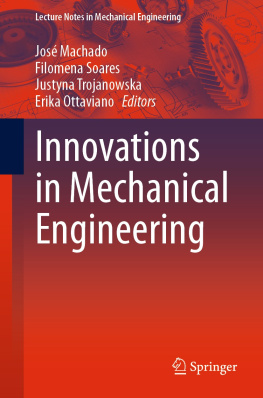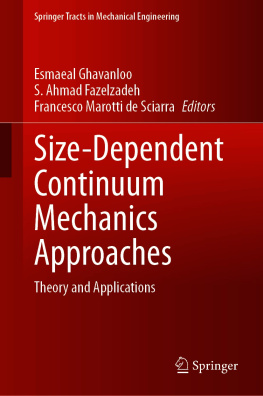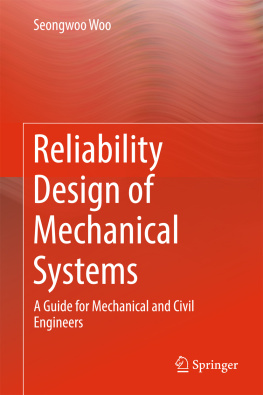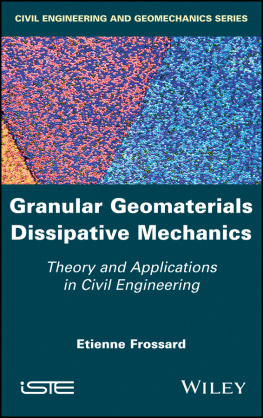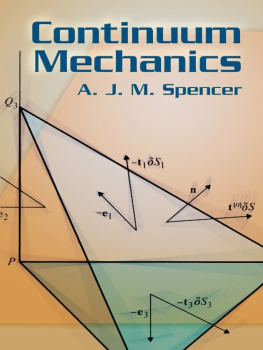
Table of Contents
Copyright 2014 by The Minerals, Metals & Materials Society.
All rights reserved.
Published by John Wiley & Sons, Inc., Hoboken, New Jersey.
Published simultaneously in Canada.
No part of this publication may be reproduced, stored in a retrieval system, or transmitted in any form or by any means, electronic, mechanical, photocopying, recording, scanning, or otherwise, except as permitted under Section 107 or 108 of the 1976 United States Copyright Act, without either the prior written permission of The Minerals, Metals, & Materials Society, or authorization through payment of the appropriate per-copy fee to the Copyright Clearance Center, Inc., 222 Rosewood Drive, Danvers, MA 01923, (978) 750-8400, fax (978) 750-4470, or on the web at www.copyright.com. Requests to the Publisher for permission should be addressed to the Permissions Department, John Wiley & Sons, Inc., 111 River Street, Hoboken, NJ 07030, (201) 748-6011, fax (201) 748-6008, or online at http://www.wiley.com/go/permissions.
Limit of Liability/Disclaimer of Warranty: While the publisher and author have used their best efforts in preparing this book, they make no representations or warranties with respect to the accuracy or completeness of the contents of this book and specifically disclaim any implied warranties of merchantability or fitness for a particular purpose. No warranty may be created or extended by sales representatives or written sales materials. The advice and strategies contained herein may not be suitable for your situation. You should consult with a professional where appropriate. Neither the publisher nor author shall be liable for any loss of profit or any other commercial damages, including but not limited to special, incidental, consequential, or other damages.
Wiley also publishes books in a variety of electronic formats. Some content that appears in print may not be available in electronic formats. For more information about Wiley products, visit the web site at www.wiley.com. For general information on other Wiley products and services or for technical support, please contact the Wiley Customer Care Department within the United States at (800) 762-2974, outside the United States at (317) 572-3993 or fax (317) 572-4002.
Library of Congress Cataloging-in-Publication Data is available.
ISBN 978-1-118-41341-8
Foreword
This monograph by Professor Paul S. Follansbee encompasses first an introduction to the elements controlling the mechanical behavior of metals; that is, crystal structure, thermodynamics, dislocations and twinning, defectobstacle interactions, work hardening, deformation kinetics, and how the mechanical behavior of metals is quantified using mechanical testing. This book then provides an in-depth introduction as both a teaching aid to the faculty member and/or student to the mechanistic basis of an internal state variable-based constitutive model, specifically the mechanical threshold strength (MTS) model, as well as a seminal reference to professional researching and modeling the mechanical behavior of face-centered cubic (FCC), body-centered cubic (BCC), and hexagonal close-packed (HCP) metals and alloys. The thermodynamic and physical basis of the model's derivation is presented in detail as well as the evolution of the modeling approach to first treat pure metals, then alloys, and finally the complications imposed by multiphase alloys. The methodology of data requirements, data analyses, and the derivation of the different terms of the MTS model are summarized for a fictitious metal to illustrate the step-by-step procedures for the model construction.
Thereafter, three chapters of the monograph present detailed reviews of the application of the MTS model to FCC pure metals and alloys, followed by BCC metals and alloys, and finally, HCP metals and alloys where the complications of both deformation twinning and dynamic strain aging effects are discussed. Building upon the approaches set forth in the previous chapters, the author presents a chapter considering the deformation in austenitic stainless steels including both the effects of dynamic strain aging as well as the impact of irradiation damage on work hardening and deformation kinetics. Application of the model to the strength and deformation response of heavily deformed metals, such as that encountered during equal-channel angular pressing (ECAP) is described for a number of metals and alloys. Finally, a summary of the status of the MTS model and the challenges of additional physics requirements for internal state variable models to complex loading and processing paths is discussed.
This is an exceptional monograph for the student, faculty researcher or professor, and the experimental or theoretical and modeling researcher tasked with understanding the use of physically based predictive constitutive models for metals and alloys written by the preeminent author of the MTS model.
G eorge T. (R usty ) G ray III
Los Alamos National Laboratory
Preface
This monograph was compiled to accomplish several objectives. First, I have enjoyed the opportunity to work with undergraduate students at Saint Vincent College (SVC) in Latrobe, Pennsylvania, on projects related to deformation modeling in metals. While I teach an introductory materials course, I have found that each time I take on a student I have spent considerable time independently teaching the student about the basis of the mechanical threshold stress (MTS) constitutive modelan internal state variable formulation. I have found it necessary to review topics related to mechanical testing, crystal structure, thermodynamics, dislocation motion, dislocationobstacle interactions, hardening through dislocation accumulation, and deformation kinetics. Thus, I chose to write this monograph so that information they needed would be available in a single source. This monograph touches upon some topics that are covered in much more detail in available introductory materials textbooks. The chapter on structure and bonding, for instance, introduces the student to interatomic forces and dislocations, because these are essential to the understanding of strength. However, the material is incomplete and is not intended to replace the level of coverage found in an introduction to materials engineering textbook.
A second objective has been to document as completely as possible the mechanistic basis of the MTS model. The model has been under development for 25 years and has experienced use and evolution by multiple investigators. I believed a monograph focused on the elements of the model would assist others in its application. To accomplish this, I have tried to be clear about parts of the model that are soundly basedand I attempt to describe thisand others that are based on less-sound assumptions. A chapter has also been included to instruct investigators how to develop MTS model constants. I created a fictitious metalFoLLyalloyto demonstrate the required experimental test matrix and how measurements are analyzed.
Finally, I have included numerous examples of model implementation. In most cases, data available in the open literature have been used. Often, data have been extracted from a published figure using a digitization protocol, followed by curve smoothing to remove digitization errors if the published curve is smooth. Experience suggests that the digitized data agree within 2% of the actual data. Analysis of published data is not intended to repeat work in the literature but to show how experience with the MTS model has evolved, how this experience has eased model implementation, and how the MTS model can be used to understand the effects of new strengthening mechanisms, for example, fine grain processing or irradiation damage, when deformation in the base alloy is well understood.
Next page
